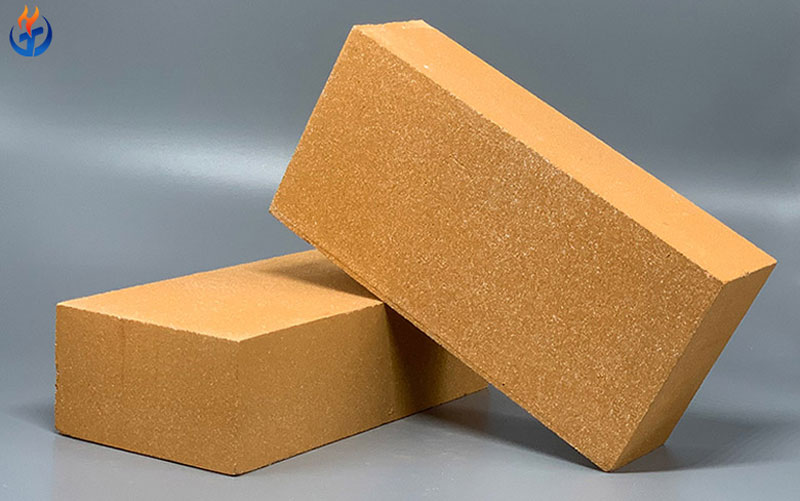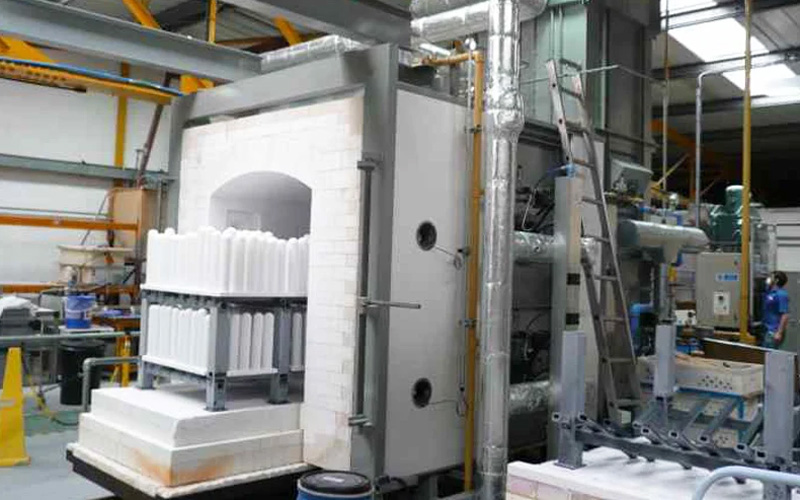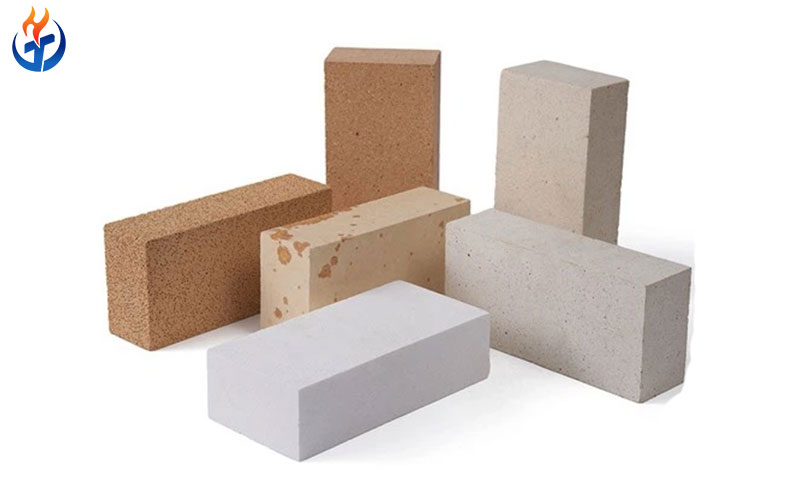High alumina bricks are a type of refractory brick with a high content of alumina (Al₂O₃), typically ranging from 48% to over 80%. Known for their excellent performance in high-temperature environments, these bricks are widely used in industries such as iron and steel, cement, ceramics, non-ferrous metals, and power generation. Their unique chemical composition and physical structure give them a combination of properties that make them indispensable in harsh operating conditions.
Then we will explore the key properties of high alumina bricks, including their thermal resistance, chemical stability, mechanical strength, and other performance features that set them apart from other refractory materials.
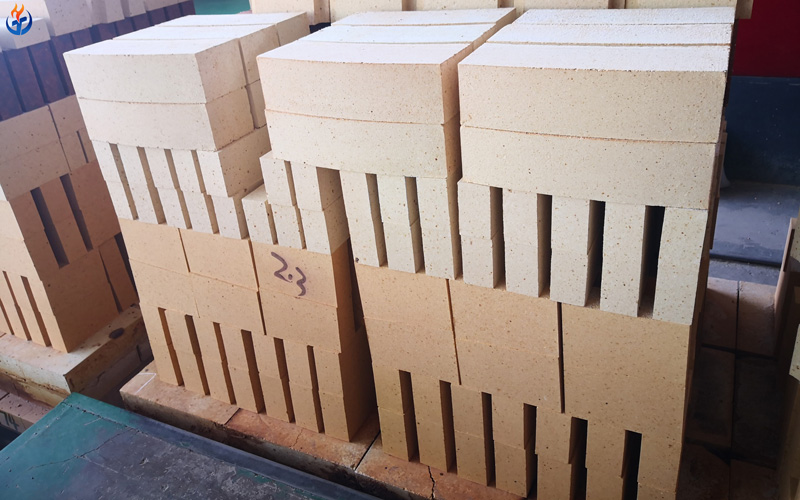
1. Chemical Composition and Classification
The core of a high alumina brick’s properties lies in its alumina content. Based on Al₂O₃ percentage, they are generally classified into:
Grade I: Al₂O₃ ≥ 75%
Grade II: Al₂O₃ ≥ 60%
Grade III: Al₂O₃ ≥ 48%
The main raw materials are bauxite, sillimanite, and kaolin clay, often combined with binding agents. The higher the alumina content, the better the thermal resistance and load-bearing capacity.
2. Thermal Properties
2.1 High Refractoriness
One of the most notable properties of high alumina bricks is their exceptionally high refractoriness, often above 1750°C.
This makes them suitable for furnaces and kilns operating under extreme temperatures, where low-alumina or silica bricks might fail.
2.2 Refractoriness Under Load (RUL)
Refractoriness under load is a measure of how well a brick maintains its shape and strength at high temperatures under mechanical stress.
High alumina bricks have an RUL of above 1450–1550°C, allowing them to withstand heavy loads without deformation.
2.3 Low Creep at High Temperatures
Creep is the slow deformation of a material under constant stress at high temperatures. High alumina bricks have a low creep rate, which ensures long service life in high-temperature structures.
2.4 Good Thermal Shock Resistance
Thermal shock occurs when materials are subjected to rapid temperature changes. While high alumina bricks generally have better thermal shock resistance than silica bricks, they may be slightly less resistant compared to fireclay bricks. Proper design and gradual heating/cooling help maximize their performance.
3. Mechanical Properties
3.1 High Compressive Strength
High alumina bricks offer compressive strengths in the range of 40–100 MPa, depending on grade and manufacturing method. This allows them to support heavy furnace structures and maintain stability during operation.
3.2 Wear Resistance
Due to their dense structure and high hardness, these bricks are highly resistant to mechanical abrasion. This makes them ideal for zones in furnaces where raw materials, molten metal, or clinker may cause surface wear.
3.3 Structural Integrity
The crystalline structure of mullite and corundum phases formed during firing gives high alumina bricks excellent dimensional stability even after prolonged service at elevated temperatures.
4. Chemical Properties
4.1 Strong Slag Resistance
High alumina bricks have good resistance to acidic and neutral slags due to the chemical stability of alumina.
They perform well in steelmaking furnaces, rotary kilns, and cement clinker production where slag corrosion is a concern.
4.2 Limited Resistance to Basic Slags
While they are excellent against acidic environments, they have lower resistance to basic slags containing high CaO or MgO. In such cases, magnesia-based refractories may be more suitable.
4.3 Oxidation Resistance
Alumina is stable in oxidizing atmospheres, making high alumina bricks suitable for applications where oxygen exposure is constant, such as in certain kiln linings and open-hearth furnaces.
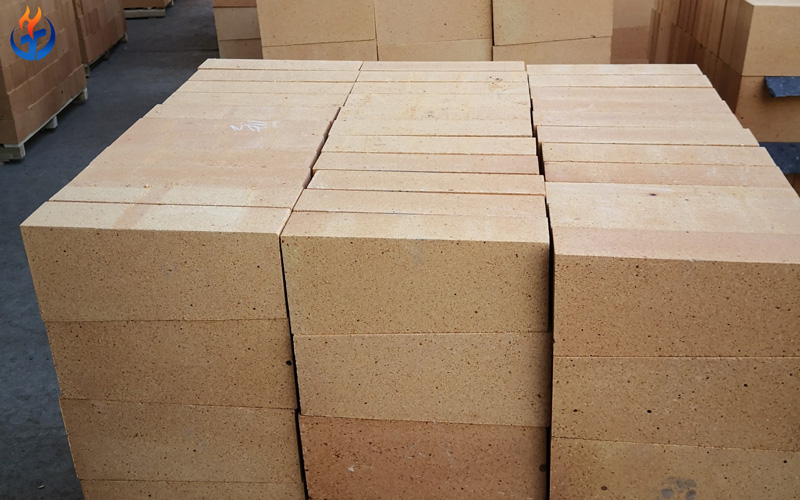
5. Physical Properties
| Property | Typical Value Range |
|---|---|
| Apparent Porosity | 18–23% |
| Bulk Density | 2.3–2.75 g/cm³ |
| Cold Crushing Strength | 40–100 MPa |
| Thermal Conductivity | 1.5–2.0 W/m·K |
| Refractoriness | ≥1750°C |
Bulk Density (BD): Higher bulk density generally indicates higher strength and better wear resistance.
Apparent Porosity (AP): Lower porosity improves resistance to slag penetration.
Thermal Conductivity: Moderate thermal conductivity provides good insulation without sacrificing strength.
6. Advantages of High Alumina Bricks
Excellent high-temperature performance — stable above 1750°C
High load-bearing capacity under elevated temperatures
Good resistance to slag corrosion from acidic and neutral media
Long service life in demanding furnace zones
Versatile applications across multiple industries
7. Industrial Applications
Because of these properties, high alumina bricks are widely used in:
Iron and Steel Industry: Blast furnace lining, hot blast stoves, steel ladles, reheating furnaces
Cement Industry: Rotary kiln linings, cement preheater towers
Ceramic Industry: Tunnel kiln roof, kiln car decks
Non-Ferrous Metal Industry: Smelting furnaces, refining pots
Power Industry: Boiler combustion chambers, thermal power plant lining
Conclusion
High alumina bricks stand out in the refractory industry for their high thermal resistance, excellent mechanical strength, and strong chemical stability. These properties make them ideal for high-temperature industrial processes where reliability and durability are critical. While they have certain limitations, careful selection and maintenance can ensure exceptional performance and a long service life.
Whether in steelmaking, cement production, ceramics, or power generation, high alumina bricks remain a top choice for engineers and plant operators seeking dependable refractory solutions.

